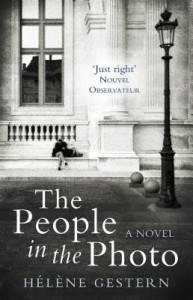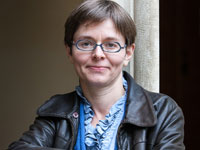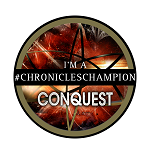Hélène Gestern was born in 1971. She teaches and researches in the field of linguistics at CNRS and sits on the editorial committee of a literary review dedicated to autobiographical writing. Her first novel, The People in the Photo, won more than 20 literary awards and draws upon, among other things, her interests in photography and cats. She lives and works in Nancy.
Recently I read the magnificent “The People in the Photo” from author Helene Gestern, translated by Emily Boyce and Ros Schwartz. It was a wonderful emotional story. I was lucky enough to be able to ask her a few questions recently and here is what she had to say.
The People in the Photo is a wonderful emotional story – was it inspired by an actual photograph or event?
The whole story is a fiction; except the description of Saint-Malo’s strand, pictures described in the novel are fictive. What is actual (some elements are) appear in the book after deep transposition.
The characters go on an amazing life affirming journey – for you, was it very much a tale of redemption?
I don’t think in terms of redemption: the word would suggest that the main characters, Hélène and Stéphane, have committed a fault, and they haven’t. What they attempt together, step by step, is to understand why their respective families have chosen to keep so heavy secrets; but mainly to accept their parents’ past without blaming them. Although some revelations are painful, they will also learn to love, maybe in a different way, these two persons they knew so briefly or so few. When I’m asked what The People in the Photo is about, I sometimes answer that its main issue is indulgence.
Does the concept of how past events can influence and affect our present intrigue you?
Certainly. Our family history is a legacy, and it can be poisoned by ancient tragedies, silences, mistakes… I read many autobiographies and I’m struck by the endless same dialectic: parents who want to shelter children by hiding the darkest part of their own history, and children suffering, sometimes deeply, because of this silence. Nevertheless, everyone is right, because there is no rule, no “good way” to deal with a painful past, and one can understand that some things can’t be told as easily. That’s why I found it relevant to introduce two characters seeking their parents’ history, not as victims of sort of generational fate, but as free adults: they also have to make their own decision about the place they want to attach to these unveiled in their memory. That encompasses the decision to refuse the worst part of this legacy.
Do you have a favourite character from the book?
Sylvia. She’s a really loving and good person and she takes care of Hélène as if the child was her own daughter. She’s very lucid about her own mistakes, but she prefers turning into life and try to make people as happy as possible around her.
Can you tell us anything about your next project?
The book I’m now working on deals again with a picture, but a in a very different way. It tells the story of two friends wounded in an accident; they are “snapped” at this moment by a paparazzi. The aftermaths of this picture’s publication (especially on internet) are so serious that they are forced to elaborate a counterattack. The story is a reflexion about the internet and its ability to destroy private life: do we have any power against it?
Thank you so much to Helene for taking the time.
Review
Translated from the French by: Emily Boyce and Ros Schwartz
Thank you to Gallic for the lovely surprise of a copy of this book in the post.
The three figures in the photograph are frozen forever, two men and a woman bathed in sunlight . . .
The chance discovery of a newspaper image from 1971 sets two people on the path to learning the disturbing truth about their parents’ pasts.
Helene Hivert discovers a photograph of her mother, a woman she knows little about, and advertises for information about the two men pictured with her – so starts a correspondence with Stephane Crusten, and a journey of discovery. As the two start to piece together the past, painful possibilities arise.
This is classic, beautiful storytelling – a tale of family secrets and age old dilemma’s coming to light in a compelling, sometimes sad, perfectly paced novel. Written with a rich, evocative prose and giving voice to two elegantly drawn people who are seeking answers about their childhoods and their parentage, Ms Gestern breathes life and soul into her characters as the people in the photo come to life.
Told via letters between Helene and Stephane, interspersed with descriptive chapters of other discovered photo’s, we follow avidly in their wake as they begin to learn more about their history and where they have come from. Each newly discovered nugget leads on to the next – like a literary game of pass the parcel, each layer reveals another and another until finally the gift of full disclosure emerges. At turns fascinating, heartbreaking, passionate and astonishing, this one will touch your reading soul.
It may bring a tear to your eye – it did to mine- ultimately this was that very wonderful thing, an absolutely fulfilling reading experience. Exquisite and inspiring.
My thanks to the translators without whom I may never have read this story – an outstanding job.
Find out more here: http://www.helene-gestern.net/helene.gestern/index.html
Purchase Information: http://www.amazon.co.uk/The-People-Photo-H%C3%A9l%C3%A8ne-Gestern/dp/1908313544/ref=tmm_pap_title_0?ie=UTF8&qid=1392370152&sr=1-1
Happy Reading Folks!







